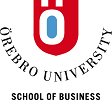No 2023:7: Bayesian Predictive Distributions of Oil Returns Using Mixed Data Sampling Volatility Models
Audrone Virbickaite (), Hoang Nguyen () and Minh-Ngoc Tran ()
Additional contact information
Audrone Virbickaite: CUNEF Universidad, Postal: Campus Pirineos, Calle Pirineos, 55, 28040 Madrid, Spain
Hoang Nguyen: Örebro University School of Business, Postal: Örebro University, School of Business, SE - 701 82 ÖREBRO, Sweden
Minh-Ngoc Tran: Discipline of Business Analytics, The University of Sydney Business School, Postal: H70 - Abercrombie Building, The University of Sydney, NSW 2006 Australia
Abstract: This study explores the benefits of incorporating fat-tailed innovations, asymmetric volatility response, and an extended information set into crude oil return modeling and forecasting. To this end, we utilize standard volatility models such as Generalized Autoregressive Conditional Heteroskedastic (GARCH), Generalized Autoregressive Score (GAS), and Stochastic Volatility (SV), along with Mixed Data Sampling (MIDAS) regressions, which enable us to incorporate the impacts of relevant financial/macroeconomic news into asset price movements. For inference and prediction, we employ an innovative Bayesian estimation approach called the density-tempered sequential Monte Carlo method. Our findings indicate that the inclusion of exogenous variables is beneficial for GARCH-type models while offering only a marginal improvement for GAS and SV-type models. Notably, GAS-family models exhibit superior performance in terms of in-sample fit, out-of-sample forecast accuracy, as well as Value-at-Risk and Expected Shortfall prediction.
Keywords: ES; GARCH; GAS; log marginal likelihood; MIDAS; SV; VaR
Language: English
35 pages, April 14, 2023
Full text files
wp-7-2023.pdfFull text
Questions (including download problems) about the papers in this series should be directed to ()
Report other problems with accessing this service to Sune Karlsson ().
RePEc:hhs:oruesi:2023_007This page generated on 2024-09-13 22:16:32.

